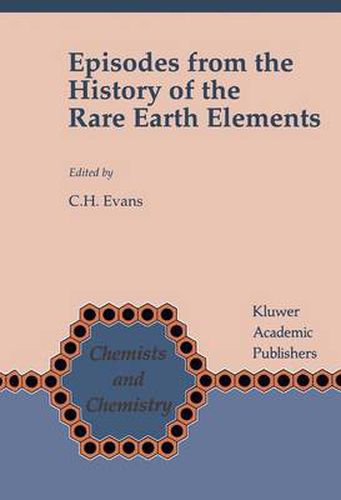Readings Newsletter
Become a Readings Member to make your shopping experience even easier.
Sign in or sign up for free!
You’re not far away from qualifying for FREE standard shipping within Australia
You’ve qualified for FREE standard shipping within Australia
The cart is loading…






This title is printed to order. This book may have been self-published. If so, we cannot guarantee the quality of the content. In the main most books will have gone through the editing process however some may not. We therefore suggest that you be aware of this before ordering this book. If in doubt check either the author or publisher’s details as we are unable to accept any returns unless they are faulty. Please contact us if you have any questions.
This work looks at the history of rare earth elements. Part I, Discovery , describes how the isolation and characterization of each new rare earth element confronted chemists with unparalleled difficulties for over 150 years. In addition, these elements introduced particular problems for Mendeleyev’s periodic table. Study of the rare earths occupied the best chemical minds of the day, including such notables as Gadolin, Berzelius, Mosander, Hisinger, Kloproth, Urban, Auer von Welsbach and Crookes. An interesting inclusion in the present work is an account by Marinsky of the discovery of the last rare earth element to be identified: promethium. Taken together, these chapters show how chemical discovery is limited by technology and how priority disputes arise and are settled. Part II, Application , has chapters on both the industrial uses of the rare earths and their application to pharmacology and medicine, where gadolinium is now a standard contrast-enhancing agent for magnetic resonance imaging (MRI). There is also a contribution from the director of the China Rare Earth Information Centre, which is appropriate as China has the world’s largest deposits of rare earth minerals. Today, rare earth elements have a number of important industrial applications including their use as colourants, X-ray phosphors, lasers and magnets. Their unique properties have been widely exploited in biological and biochemical research. They also find increasing application in medicine. This volume should be of interest to chemists and historians of science and technology.
$9.00 standard shipping within Australia
FREE standard shipping within Australia for orders over $100.00
Express & International shipping calculated at checkout
This title is printed to order. This book may have been self-published. If so, we cannot guarantee the quality of the content. In the main most books will have gone through the editing process however some may not. We therefore suggest that you be aware of this before ordering this book. If in doubt check either the author or publisher’s details as we are unable to accept any returns unless they are faulty. Please contact us if you have any questions.
This work looks at the history of rare earth elements. Part I, Discovery , describes how the isolation and characterization of each new rare earth element confronted chemists with unparalleled difficulties for over 150 years. In addition, these elements introduced particular problems for Mendeleyev’s periodic table. Study of the rare earths occupied the best chemical minds of the day, including such notables as Gadolin, Berzelius, Mosander, Hisinger, Kloproth, Urban, Auer von Welsbach and Crookes. An interesting inclusion in the present work is an account by Marinsky of the discovery of the last rare earth element to be identified: promethium. Taken together, these chapters show how chemical discovery is limited by technology and how priority disputes arise and are settled. Part II, Application , has chapters on both the industrial uses of the rare earths and their application to pharmacology and medicine, where gadolinium is now a standard contrast-enhancing agent for magnetic resonance imaging (MRI). There is also a contribution from the director of the China Rare Earth Information Centre, which is appropriate as China has the world’s largest deposits of rare earth minerals. Today, rare earth elements have a number of important industrial applications including their use as colourants, X-ray phosphors, lasers and magnets. Their unique properties have been widely exploited in biological and biochemical research. They also find increasing application in medicine. This volume should be of interest to chemists and historians of science and technology.